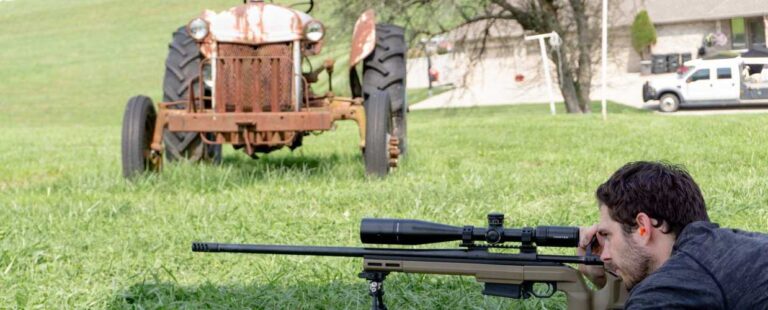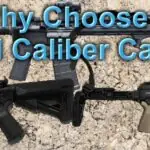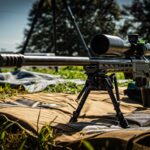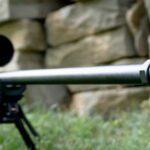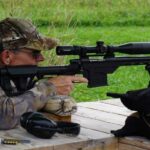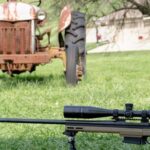Selecting the right rifle cartridge is a crucial decision, with a lot to consider. To help you make the best choice, we’ve broken down everything (almost) you need to think about.
1) Purpose
The first and most important step is to define how you’ll use the cartridge.
Some bullets are versatile, handling a variety of tasks, while others are highly specialized. Understanding your intended use of the bullet is an essential first step.
Consider whether you’re hunting (small or big game), target shooting, competing, or focusing on self-defense. Each category has its nuances, and the more specific you are about your needs, the easier it will be to find the ideal cartridge.
For instance, if you’re never shooting beyond 100 yards, a .338 Lapua might be overkill. Conversely, if you’re hunting dangerous game, upgrading from a .22-250 could be wise.
Knowing your purpose is the foundation of making the right choice and will feed into all the following factors.
2) External Ballistics
External ballistics deals with the behavior of your bullet from the moment it leaves the barrel until it impacts the target. Key factors here include bullet drop, wind deflection, and maximum effective range.
A bullet that shoots flat, retains its velocity, and resists wind deflection increases your chances of hitting the target. For example, misjudging wind speed by 2 mph with a .300 Win Mag might result in a minor deviation, still landing a solid hit. However, the same error with a .223 could mean missing by several feet.
Bullet drop is also critical. A flat-shooting, high-velocity round allows for greater flexibility in range estimation, while a bullet with a larger arc might lead to a miss or a wounding shot.
If you regularly use a rangefinder and ballistic calculator, bullet drop is less of a concern. However, if you often shoot at unknown distances, a flatter-shooting round could be more forgiving.
Remember, a round that performs well at short distances may not maintain that advantage at long range. A light, fast bullet might lose velocity quickly, while a heavier, slower bullet might maintain speed over longer distances—think of it as the “Tortoise and the Hare” scenario.
3) Terminal Ballistics (“Stopping Power”)
Terminal ballistics examines what happens when a bullet impacts the target. While “stopping power” has been debated and sometimes misunderstood, it refers to how effectively a round can incapacitate a target.
If you spend most of your time at the range shooting paper targets or steel, “stopping power” may not be a priority. However, in situations like dangerous game hunting, it becomes a critical factor.
Five key elements influence “stopping power”: bullet velocity, weight, diameter, design, and shot placement.
Shot placement is crucial, but it won’t affect your bullet selection directly. In popular calibers, a wide range of bullet designs is available, so design might not be a primary concern either.
This leaves velocity, weight, and diameter as the main considerations when selecting a bullet.
4) Economics and Availability
The availability and cost of ammunition, along with barrel life, can greatly influence your choice of cartridge.
If you already own and use a certain cartridge, that might heavily sway your decision. For instance, you might think the .300 PRC is perfect for your next big game hunt, but if you already own a .300 Win Mag, sticking with one type of ammo might be more practical. Alternatively, diversifying your ammo needs could help you weather the next ammo shortage—though I lean toward the former approach myself it’s up to you to decide.
Availability is another crucial factor, especially if you don’t reload. The most impressive cartridge loses its appeal if you can’t actually shoot it.
Established cartridges, like the .223 and .308, often have the edge over newer, flashier rounds when it comes to availability.
Barrel life is also a significant consideration, particularly for high-volume shooters. While a hunter might not worry about barrel wear firing 10–20 rounds a year, a target or competition shooter putting hundreds of rounds downrange each month might need to rebarrel a rifle more frequently.
5) Other Considerations
Ergonomics: Choosing a bullet also means choosing a rifle to match. While a .308 with an 18” barrel might not offer the ballistics of a .338 with a 30” barrel, it’s certainly more maneuverable. If you’re selecting a rifle for a younger shooter or someone with less experience, a heavy .300 Win Mag might not be the best choice.
Recoil: As precision shooting gains popularity, with its emphasis on shot placement and self-spotting, recoil has become a more significant factor for many marksmen.
Though listed here as an “Other Consideration,” recoil can be a deciding factor, especially in competitive shooting.
If you want to reduce recoil, you can add weight to the rifle, use a muzzle brake, or attach a suppressor—though these options can be costly and might affect the rifle’s handling. The simplest way to reduce recoil is to choose a lower-recoiling cartridge.
Ultimately, there’s no “one-size-fits-all” solution when it comes to bullet selection, and it’s often best to own a few different rifle calibers to meet your various needs.
With so many cartridges available, the choice can feel overwhelming, but by considering these five categories, you can find the perfect fit for your specific needs.
Remember, no bullet is the best at everything, but some will definitely be better suited for your goals than others. If you want to know more, sign up for training with us.

